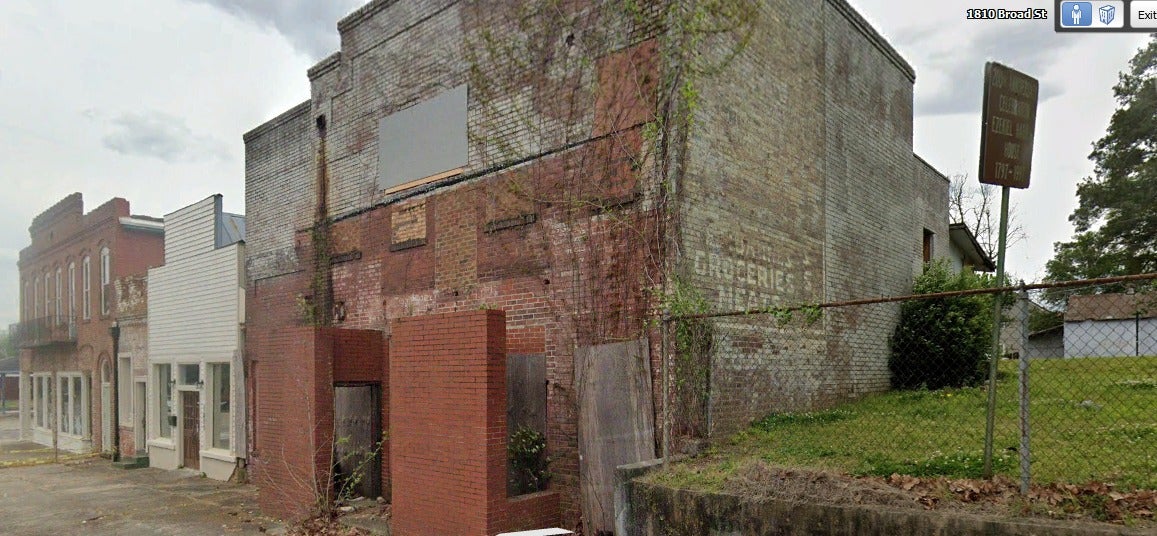There have been plenty of occasions where Augusta history has been purposefully skewed to present either a glorious or, maybe an eerie past for some local landmark, but mostly, errors in the record happen when local historians combine oral stories with sketchy evidence and call it a day.
No, the Haunted Pillar was not haunted.
In fact, we don’t even know what building the column came from; however, it did not come from a slave market because Augusta did not have a slave market and the column was far too short to have come from the giant market on Broad Street that met its end as the victim of a cyclone.
There is a building on upper Broad Street, though, that people have claimed for decades was the “old Black theater,” a relic of the segregation era. Naturally, over time, the oral history thread received some embellishments and those enhancements later become seen as fact in the historic record.
An Augusta native who now lives in North Carolina, Tom Landrum, decided to dig into the piles of fire insurance maps, newspaper ads and phone directories to discover the real story of 1808-10 Broad Street.
As is usual, the true history turns out to be far more compelling than the stories that have evolved over time.
Currently, the building is a boarded-up eyesore that really sticks out as its abuts restored storefronts, sits next to the historic Ezekiel Harris House and across from the Kroc Center.
According to Landrum’s research, the buildings that existed on that spot prior to 1914 were wooden framed shops, according to the Sandborn Fire Insurance directory. Because that area combined with lower Broad Street served the wealthy Northerners who travelled to Augusta in the winter, it is likely that specialty shops would line up along in a row next to the local pharmacy, similar to the small strip malls of today.
Yes, the women of 1914 enjoyed getting manicures.
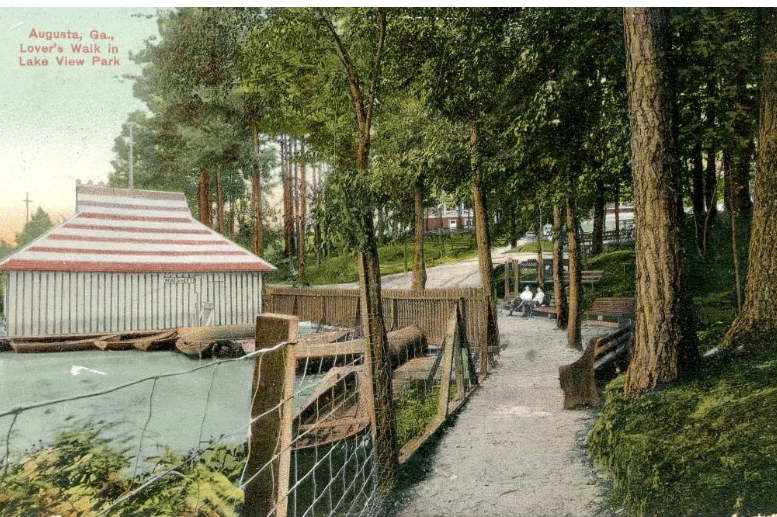
Likely those buildings housed hat shops and dress shops. This was still the era where horse-drawn carriages were most common on the dirt streets, however, the corner of Broad and 18th looks to have always been a somewhat busy business area as Lake Olmstead was becoming the premiere outdoor entertainment.
In 1914, two brick buildings were erected on the site, which is so close to the Augusta Canal that it might as on the bank; one building housed a polling place and the other appears to be a retailer of “Near Beer.”
Augusta was, of course, a wet town at the time, but the Temperance Movement was alive and well in the mill village of Harrisburg. Many of the married men had wives that were tee-totalers. Revisionist history aside, such “middle class” families were not paternalistic in the way of the elite. Marriage between husband and wife was just as much a survival partnership as a romantic relationship. With kids hanging about her petticoats, if the woman of the house said there was to be no alcohol in the house, then there was no alcohol in the house.
Unfortunately, the Near Beer store only lasted for four years and the building was transformed into a grocery store next to a barber shop.
The location makes sense for site for a grocer since Harrisburg had grown steadily during those years and, so-called, company stores were obsolete in the beginning of an era of reforms such as the law raising the age for compulsory education to age 14, effectively ending child labor before federal child labor laws.
The shopping model of going from one specialty store to another to buy a weeks worth of groceries gave way to retain many types of goods under one roof and both pharmacies and grocers had a special candy county for the kid with a few pennys to spare. Even though the Model T was becoming prevalent on the roads, gas cost 25 cents and that is equivalent to $5.76 in 2025, so it was far preferable not to travel all the way downtown if one could walk a couple of blocks to the store.
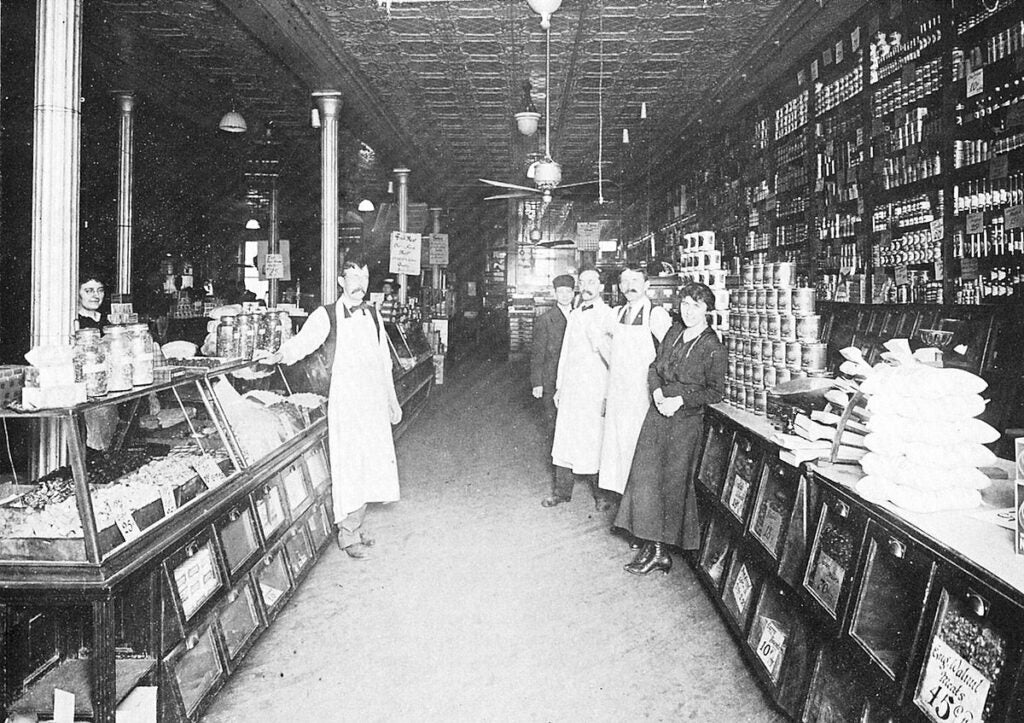
According to the New Georgia Encyclopedia, progressive councilmen in Augusta turned to the principles of capitalism to outline their plans for government. In an effort to attract more businesses, Harrisburg residents saw improved sewer lines and streets, Olmstead park gained the Julian Smith Casino, and the city took on beautification projects that earned the town the nickname of “the Garden City.”
The grocery store and barbershop on upper Broad Street both would have been hives of activity. Adverts in the Augusta Herald showed that fresh meat, dry goods and produce along with toys were available in one location in Harrisburg.
Meanwhile, the barbershop on Saturday nights would have seen working men hanging out on chairs out front and inside the shop with a drink in hand. After six days of working straight at the mill all week, it was a relief to sneak out and have a real beer while chewing the fat with the other men who were doing the same thing.
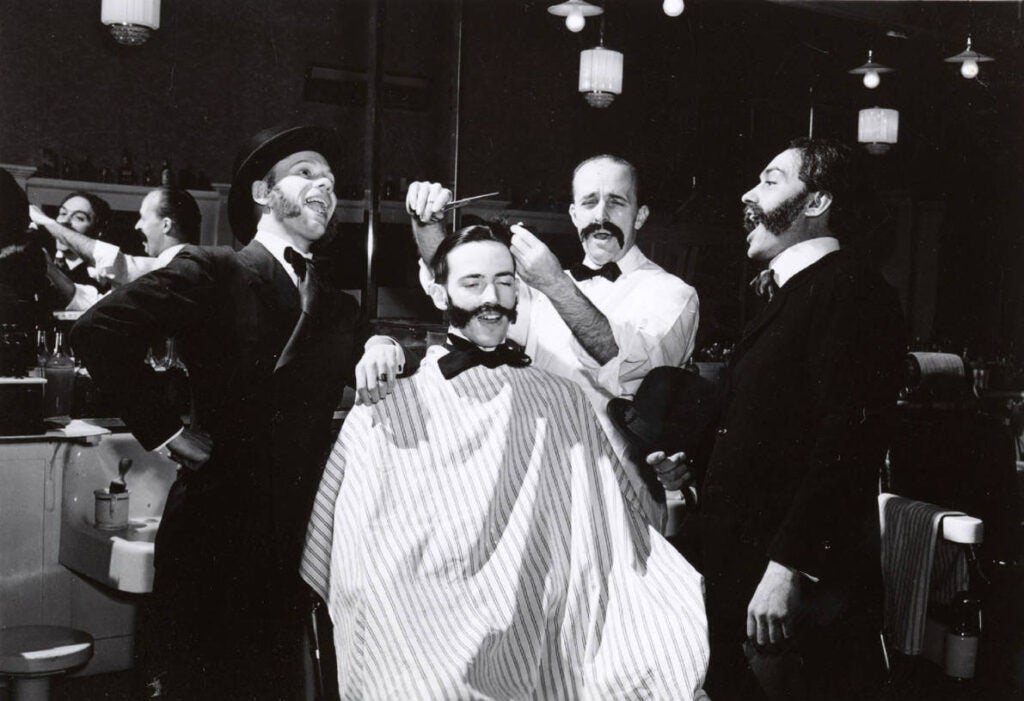
Not much would change once Prohibition came along, as Augusta was known as one of the wettest cities in America.
The late columnist of The Augusta Press, John Clarke, grew up in Harrisburg and often reminisced about the how old habits were slow to fade away, remembering that neighborhood men would gather, cold beer in hand, several times a week after a long day at the mill.
“You would find them hanging out wherever there was a spittoon and watch men get their hair cut or watch them change tires at the fillin’ station,” Clarke remembered.
By 1923, the owner of the grocery store was a man by the name of E. F. Barnes. He lived on the second floor of the property and it is clear that he was intent on growing his business as ads for the grocery store appeared in the “McDuffie Progress,” the newspaper serving Thomson, Ga.
In those days, Broad Street, from what is now Gordon Highway all the way to Lake Olmstead, would be brimming with activity on Saturdays as people would take the trains or ferries or drive in from all of the outlying areas to shop and be entertained in Augusta.
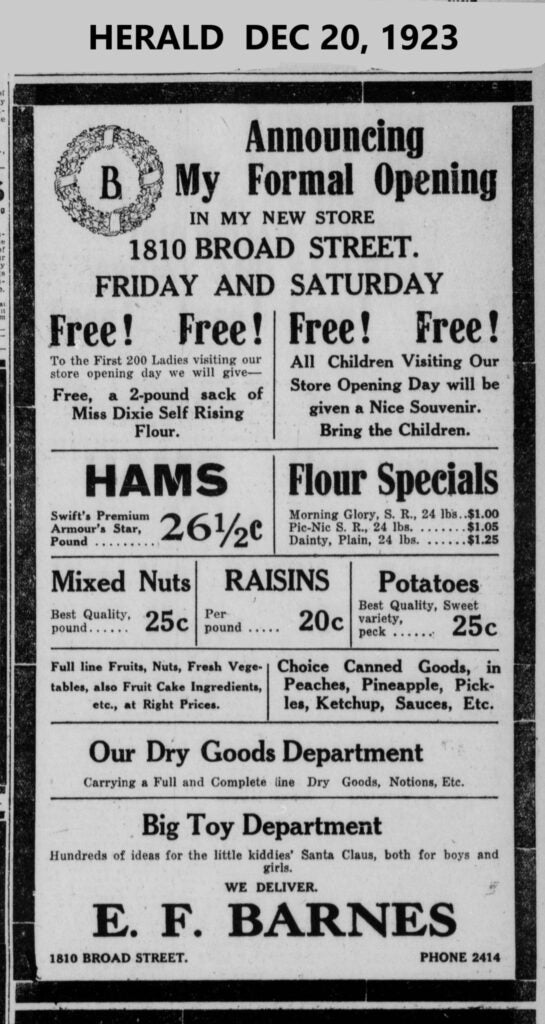
It is not surprising that Barnes wanted to make sure his circulars showing his sale prices were printed alongside the other grocers on Broad Street to people that lived far from his location. When the first radio station, WRDW signed on the air in 1930, people would hear an announcer dutifully run down the list of special prices at groceries such as Barnes after the Little Orphan Annie and Flash Gordon programs ended.
People would make the trip to Augusta an all day event. Families might lunch at many of the food counters, walk the kids down to Modjeska, Miller or Rialto Theaters and enjoy a double-feature matinee, then check out the latest fashions in the windows of the retail stores or take a gander at the new tools on display at the hardware stores.
By the late 1960s, upper Broad Street began to wane as a retail hub and the entirety of Broad itself would follow only a few years later as the outlying suburbs began to surge and retail went with them.
The main building at 1808-10 would be converted into a children’s day-care center and later, a church and that would be the era where the two small walls were erected, changing the facade and look of the building, possibly making people mistake it for a small theater. Records show that the building was totally abandoned in the mid-1970s.
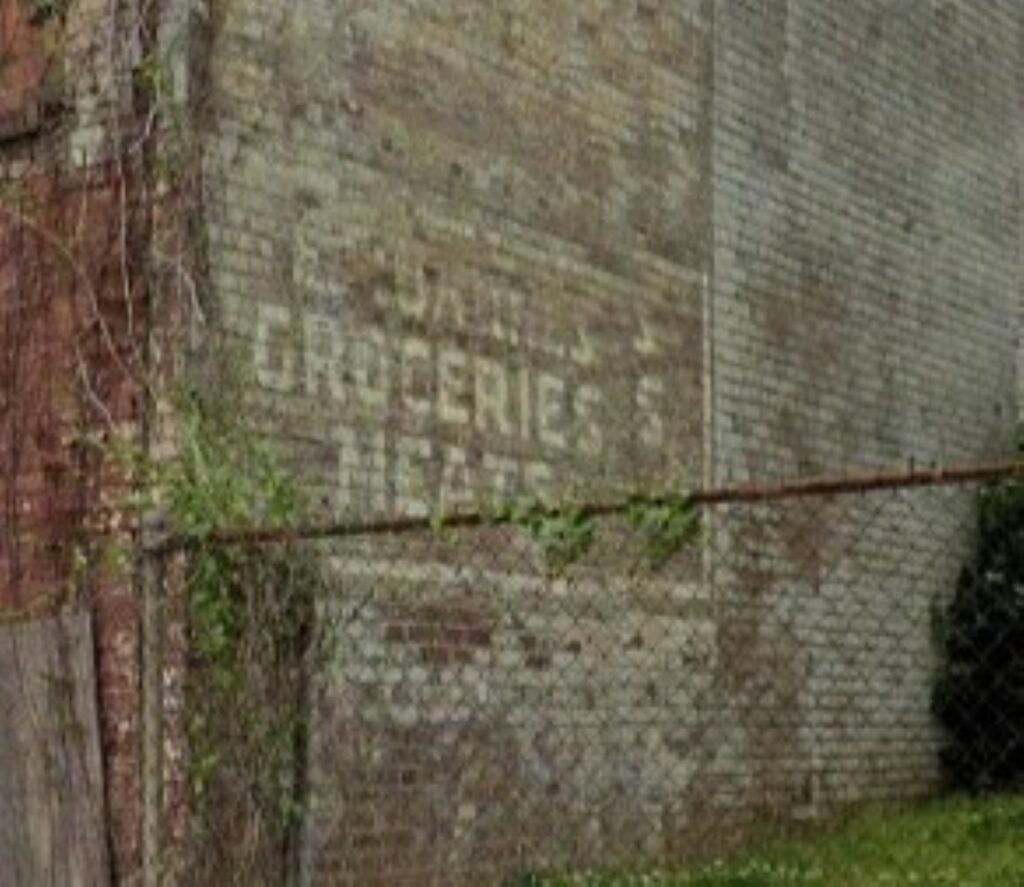
Before the old building became the ghastly eyesore that it remains today, it is easy to look at the building and make out the windows and places where signs were hung.
While it had several uses throughout its lifetime, according to all the records found by Landrum, the building never housed a movie theater.
…And that is something you may not have known.
Scott Hudson is the Senior Investigative Reporter, Editorial Page Editor and weekly columnist for The Augusta Press. Reach him at scott@theaugustapress.com

